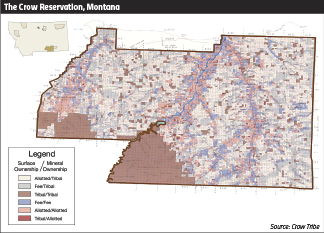When the Indian Wars ended after Custer’s demise at the Battle of the Little Big Horn, Native Americans found themselves relegated to reservations. Thereafter followed their next war, one to stave off poverty and protect what little wealth they had left.
In that war the federal bureaucracy—mainly the Bureau of Indian Affairs (BIA)—took control of Indian Country, which allowed non-Indians to take huge amounts of reservation lands. In 1887 there were 136 million acres in Indian Country, but by 1933 that number had dwindled to less than 70 million acres. The Blackfeet lost at least one-third of their reservation to the formation of Glacier National Park. Fertile river valleys coveted by settlers reduced reservation land within one mile of a river from 24% in 1890 of reservations to 10.5% by 1915.
Recently the war over resources has pitted tribes against tribes. In the latest battle, the Corps of Engineers on May 9 ruled that a proposed coal terminal in Washington State violated the treaty-protected fishing rights of the Lummi Nation because the terminal would have covered 122 acres of coastal water with a trestle and wharf.
A zero-sum solution
While this was a victory for the Lummi, it was a defeat for the Crow Nation, a Montana tribe hoping to ship its coal through the terminal in which it held a small ownership stake. The Crow Big Metal Mine alone contains 1.4 billion tons of clean burning coal, much of which would have been shipped to Asian markets through the terminal. Such sales are crucial for a tribe with an unemployment rate over 30% and a poverty rate of 40%. Tribal chairman, Darrin Old Coyote points out that, “For the Crow people, there are no jobs that compare to a coal job.” A Harvard University report on the impact of the Absaloka Mine, another of the tribe’s coal deposits, concludes that nearly 20% gross regional output, including the reservation and the surrounding Big Horn County, and 8% of the region’s worker compensation come from that mine alone. For Old Coyote’s tribe, “The war on coal is a war on our families and our children.”
Originally published at Forbes on May 18, 2016.
Also read “Unlocking the Wealth of Indian Nations: Overcoming Obstacles to Tribal Energy Development,” a PERC Policy Perspective by Shawn Regan.
And stay tuned for the forthcoming book, Unlocking the Wealth of Indian Nations (June 2016).





